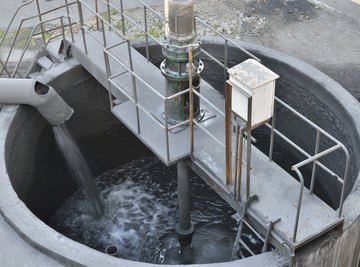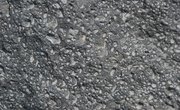
Waste-water treatment systems use loading rates as a measure for determining whether the system will have a tendency to clog. Recommended loading rates exist for different types of material such as sands, soil and domestic sewage. Hydraulic and organic loading rates can both be used as units of measurement. Separate calculations are needed for hydraulic and loading-rate measurements. You can calculate loading rates with a few basic steps.
Calculate the hydraulic loading rate with the formula: Hydraulic loading rate = Design flow (gal/day) / Area (feet ^2). Design flow is the volume of waste water per day.
Calculate the organic loading with the formula: Organic matter = (BOD5 (mg/l) * 3.785 l/gal) / 453,600 mg/lb. BOD5 is the measure of oxygen needed to degrade organic matter dissolved in the the waste water over a period of 5 days.
Calculate the organic loading rate with the formula: Organic loading rate (lbs BOD5/ft2/day) = (Organic matter (lbs BOD5/gal). * Design Flow (gal/day) )/ Area (ft^2)
References
About the Author
Paige Turner started writing professionally in 2009. Her articles on business, health, technology and travel have been published on various websites ever since. She holds a Master of Science in engineering from New York University.
Photo Credits
Nian Liu/iStock/Getty Images
